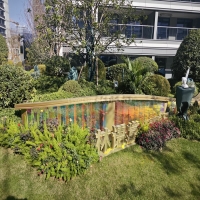Welcome to the website for landscape facilities products and knowledge.
How does the bin’s design accommodate different terrains, such as slopes or uneven ground?
Modern bin designs incorporate several innovative features to accommodate different terrains, including slopes and uneven ground. One key element is the use of weighted bases or low centers of gravity, which prevent tipping even on inclined surfaces. Many outdoor bins also feature adjustable legs or leveling mechanisms, allowing them to sit stably on irregular terrain without wobbling.
For particularly challenging environments, some bins employ wide, rubberized foot pads that grip uneven surfaces while distributing weight evenly. High-end models may include swivel casters with locking mechanisms for mobility on rough ground combined with stability when stationary.
The shape of the bin also plays a role - tapered designs with broader bottoms naturally resist tipping, while strategically placed handles provide better control when moving bins across difficult terrain. These design considerations ensure reliable waste containment regardless of ground conditions, making them ideal for parks, hiking trails, and urban landscapes with variable topography.
Manufacturers often test bins on various angles and surface types during development, using materials that maintain structural integrity while adapting to ground imperfections. This terrain-responsive design philosophy represents a significant advancement in outdoor waste management solutions.
Related search:

Recommendation
Metal and acrylic color-changing combined curtain wall for large-scale public landscape facilities